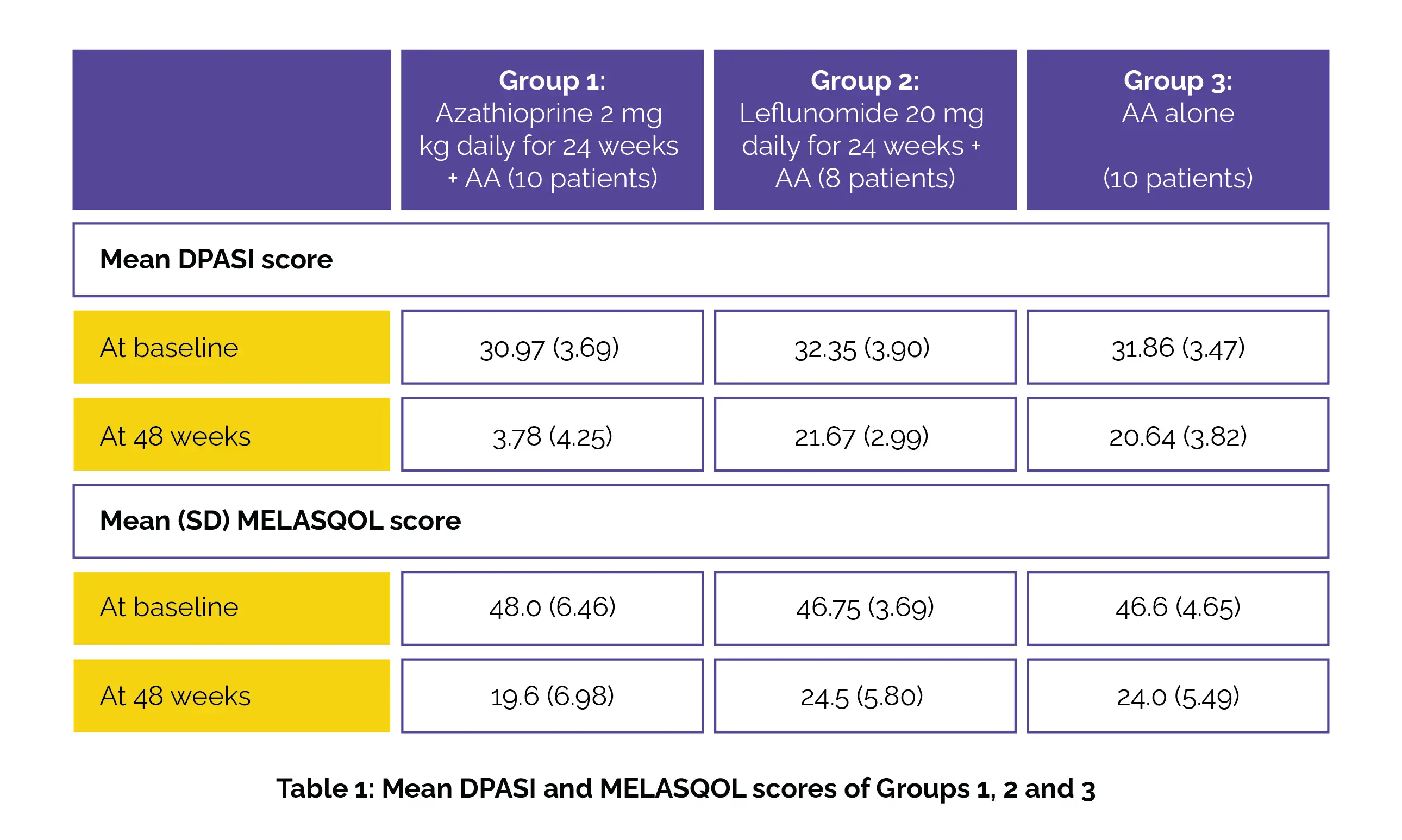Categories
Change Password!
Reset Password!


Azathioprine reduces hyperpigmentation and improves quality of life for pigmented contact dermatitis patients.
In a recent study led by Surabhi Sinha and team, published in Clinical and Experimental Dermatology, a significant discovery has been made concerning effective treatment for a non-eczematous type of allergic contact dermatitis indicated by dermal hyperpigmentation.
Pigmented contact dermatitis (PCD), also known as Riehl melanosis (RM) is a challenging skin condition due to its stubborn dermal hyperpigmentation. Traditional treatments often fall short, leaving patients grappling with discomfort and poor quality of life. However, hope has emerged from an unexpected source: Azathioprine for people with PCD.
The study comprised of 28 patients with patch test-positive PCD, and compared the efficacy of Azathioprine alongside allergen avoidance (AA) and Leflunomide. The most common allergens found were hair colour/dye and paraphenylenediamine. The reduction in the Mean (SD) Dermal Pigmentation Area and Severity Index (DPASI) and Melasma Quality of Life scale (MELASQOL) score of the three study groups (P<0.001) is shown in the following Table 1 and Table 2:

The maximum percentage decline was observed with the use of Azathioprine (56%). Therefore, patients receiving Azathioprine experienced a statistically significant reduction in the scores of DPASI and Hindi MELASQOL. Transaminitis (elevated liver enzyme) was the most frequent adverse event in both the Azathioprine and Leflunomide groups.
Clinical and Experimental Dermatology
Comparison of outcomes of azathioprine, leflunomide and allergen avoidance in patients with patch test-positive pigmented contact dermatitis: a randomized comparative study
Surabhi Sinha et al.
Comments (5)